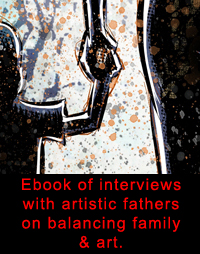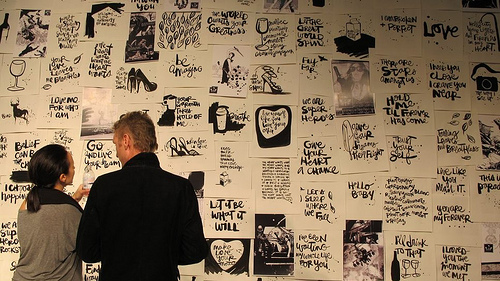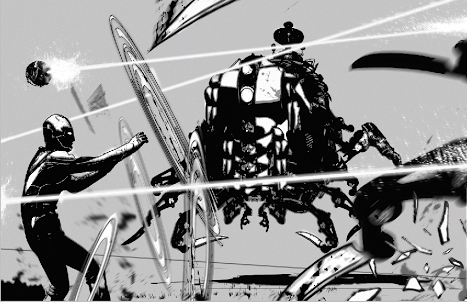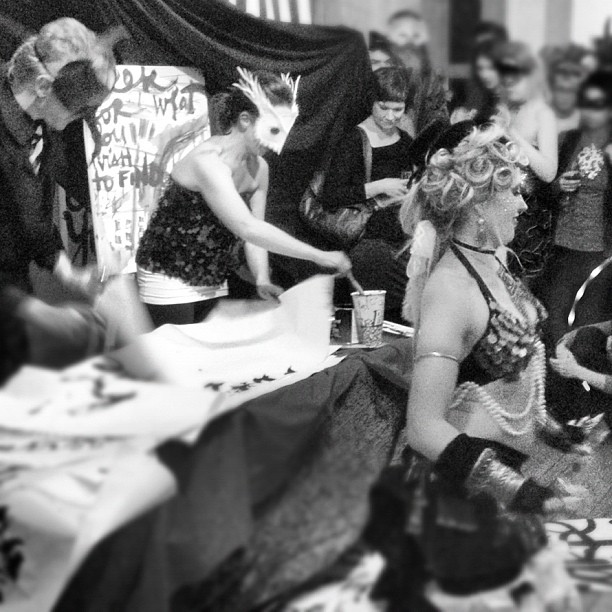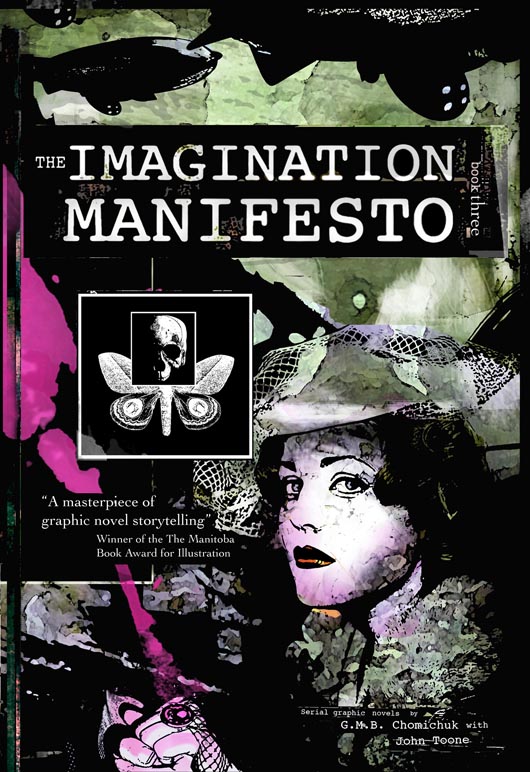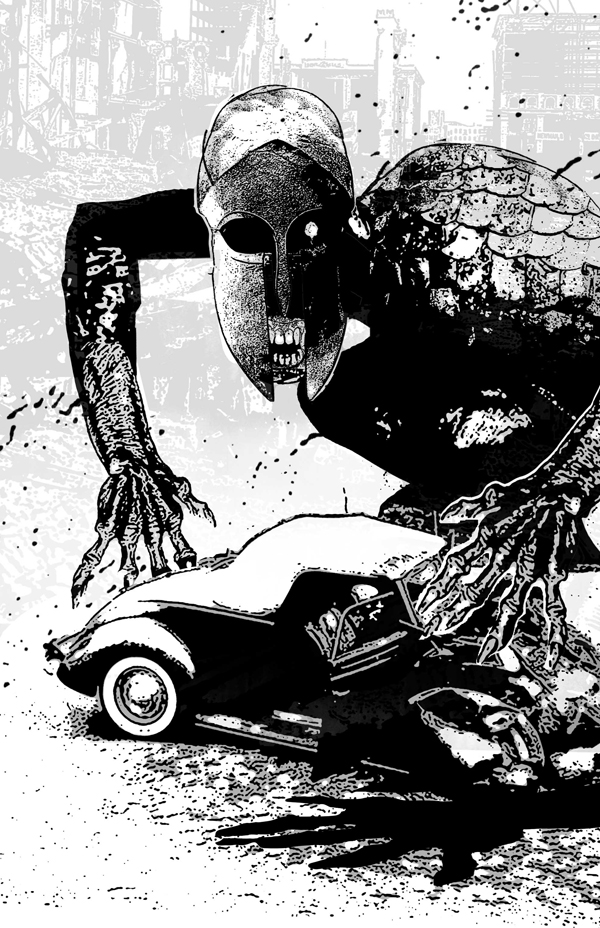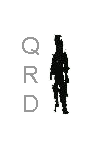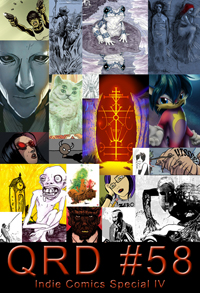
February 2013
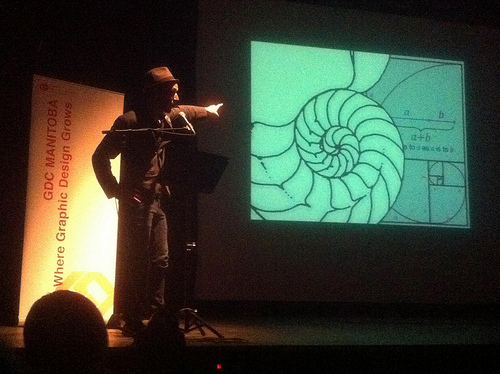
City: Winnipeg
Comics: The Imagination Manifesto, RayGun Gothic
Websites: www.comicalchemy.blogspot.com, twitter.com/gmbchomichuk
QRD – What was the first comic book you ever bought?
GMB – A stack of coverless ROM: Spaceknights, 10 cents each. They were magic. I think I still think about the invasions of the Dire Wraiths every time I see an alien-invasion-related story.
QRD – How old were you when you put out your first comic?
GMB – I made a good number of comics every summer vacation before I hit high-school. I was 26-27 when my first serious professional-minded work started coming together.
QRD – What decade do you think produced the best comics?
GMB – Every decade has its own strengths. I’ve spent 30 days reading nothing but public domain golden age comics. I’ve been through three hundred of them doing research for an upcoming project. What strikes me the most about this experience is just how specifically each decade speaks through its comics. The fears of that decade are laid out in the narratives & dangers presented to the characters.
QRD – Why comics instead of just writing or drawing?
GMB – Comics are their own voice. Images & words intended to be narrative together are a unique magic. Juxtaposition is at its best here. The power of semiotics is at its best here. My favourite works are often from writer-illustrators... somehow it feels more personal knowing all those words & pictures came from the same place. But collaboration is also at its best here & the raw power that comes from all that creativity focused on a single shared vision is also quite marvelous when it works.
QRD – Do you see mini-comics & indie comics as paths to mainstream comics or as their own unique media?
GMB – Everyone wants to put things into little boxes. I’d rather let them out of the box. All of it is a conversation between the work & the reader. One type of publication has more readers & a more commercial focus; the other has less readers but is totally free in the structure of its storytelling. If you want to work in comics, start making them; but if you make something, follow your passions.
QRD – How many books do you produce a year & how many would you like to?
GMB – I do one complete creator-owned graphic novel a year & one work-for-hire plus a half dozen covers & a few short stories. I also have a secret other life as a high school english & art & psychology teacher. I also do gallery work. The conventions have become a place people come to buy art as well as comics; I do a lot of work specifically for prints for shows. I also teach a dozen or so writing/art/comics workshops a year & lately I’ve been invited a few times a semester to speak at the universities here in Winnipeg about the power of words & pictures together.... I am very happy with the number of books I make given how many other interests draw me away from the studio.
QRD – Do you think stories should be serialized or delivered as complete works?
GMB – More boxes. Let’s stop talking about how you’re on that side of the fence & I’m on this side. How about we talk about the work. What works, what doesn’t. What books made you cry, cheer, howl. The days when it worked to put everything into columns is over.
QRD – How long is it from when you start a comic until it’s printed?
GMB – Often a year or more. Sometimes longer. Sometime less. Sometimes hours if you count digital, which you should.
QRD – What do you do better with your comics now than when you first started?
GMB – Finish them. Seriously. Starting is easy. Finishing is hard.
QRD – Do you do thumbnails?
GMB – Yes & no. I sort of make a hurricane of ideas inside the studio, then stand in the eye of the storm to finish the story.
QRD – What does your workstation look like?
GMB – I have a studio with a large workspace. I need to spread out, even when I’m working digitally. Every scrap of every idea spread out to match the map inside my head. I print everything in stages because so much of what I do is collage.
QRD – At what point in the artistic process do you work digitally?
GMB – Every other idea floats through the scanner into the digital world & through the printer to the real world & back again. I work mixed media & so to get paint on things it needs to arrive in the physical world at least for a short time.
QRD – What do you think of digital comics & webcomics?
GMB – Anything that gets more people reading is good. You can read my DRM free graphic novel RayGun Gothic for free here.
QRD – Do you prefer working in color or black & white?
GMB – I prefer color, but lately I’m obsessed with black, white, & grey. I blame Kal Barteski for that. I’ve done two shows with her & have been greatly inspired by her high contrast work. ( lovelife.typepad.com )
QRD – How do you find collaborators?
GMB – Everything is an opportunity. I only want to work with people with a passion for what they do. Anyone doing this as a “job” is missing the point of the joyful path we can walk as creatives. Do the work, of course, be professional of course, but I can’t be around automata. I have been very lucky lately. I collaborate regularly with author & poet John Toone. I’ve had the immense pleasure to dream up TipsyTispy & Masquerade with Kal Barteski. I’ve been working with the people at CHIZINE on a few things I’m very excited about. I am just putting the finish on The Underworld with Renegade Arts Entertainment written by Lovern Kindzierski. I’ve got a project on the burner with Susie Moloney (author of Thirteen & The Dwelling) which is going to surprise people. Collaboration is key to success in this business, but you have recognize that a great project with the wrong people is much worse than an okay project with great people. The absolute joy is to work on a great project with great people. I have been very luck so far.
QRD – What do your friends & family think of your comics?
GMB – My wife is my hardest critic but my strongest supporter. My family doesn’t quite “get” my work, but that has never stopped them from encouraging me. When anyone sees that you’re in it for the long haul, they give you much more room to think & grow.
QRD – What do you think of superheroes?
GMB – I love ‘em.
QRD – Marvel or DC?
GMB – Boxes. I follow good work where it goes.
QRD – What comic characters other than your own would you like to work with?
GMB – I’m working with a number of Lovecraft characters & three dozen golden age characters right now. I’d love to do an Iron Fist or Shang-Chi story. Daredevil. The Flash. Metabarons. Alpha Flight. Batman. Doctor Strange.
QRD – Ideally would you self-publish?
GMB – Both self-publishing & work-for-hire are good for different reasons. One you own, one you don’t.
QRD – What conventions do you try to attend & why?
GMB – I always hit Central Canada Comic Con & Calgary Comic Expo; I’ve been to San Diego Comic Con & am looking forward to making Phoenix Comic Con a regular gig. I do art shows & book events too & tend to sell a lot of comics there.
QRD – Do you think your comics are well suited to comic shops or would sell better elsewhere?
GMB – The Imagination Manifesto has done well in the book market. It was nominated for an Aurora as Canada’s Best Graphic Novel, won a Manitoba Book Award & was nominated for a bunch of others. It does very well at conventions too; people looking for something different are not disappointed. We printed it as three hardcover volumes, no floppies, no softcovers. People like to get the whole story & we always have a people coming back the second day of the convention for the last two volumes. The comic market needs a tune up in that regard. More original work with finite runs.
QRD – What other medium would you like to see some of your comics made into (television, film, games, action figures, etc.)?
GMB – All of the above. Some people think that cross marketing & cross promotion dilute the core idea, I prefer thinking about all that as a simple means to build interest & readers & longevity in a story.
QRD – What would you like to see more people doing with comics?
GMB – Creator-owned-self-published-passion-projects-with-a-wide-distribution.
QRD – What do you see as the most viable mediums for comics distribution 10 years from now?
GMB – Ten years ago no one had an e-reader in their pocket. The only thing we know for sure about the future is that we don’t know for sure what is waiting there. Join the fight. Make comics.






